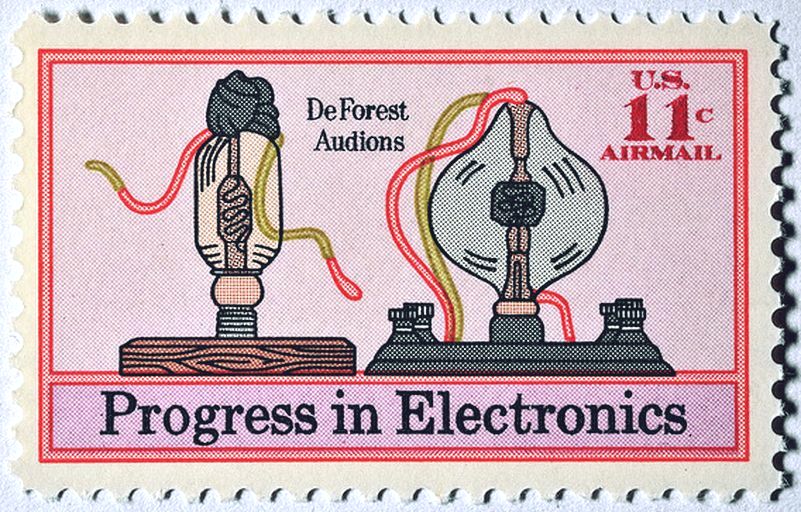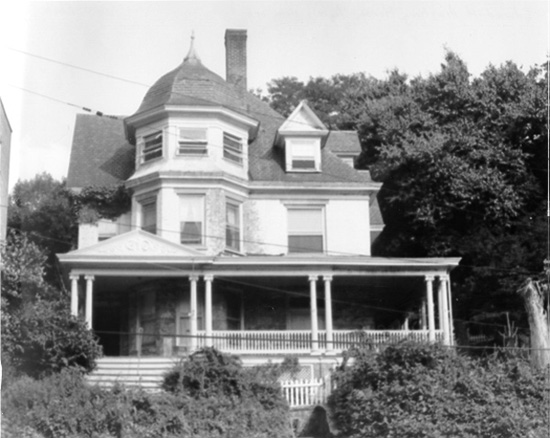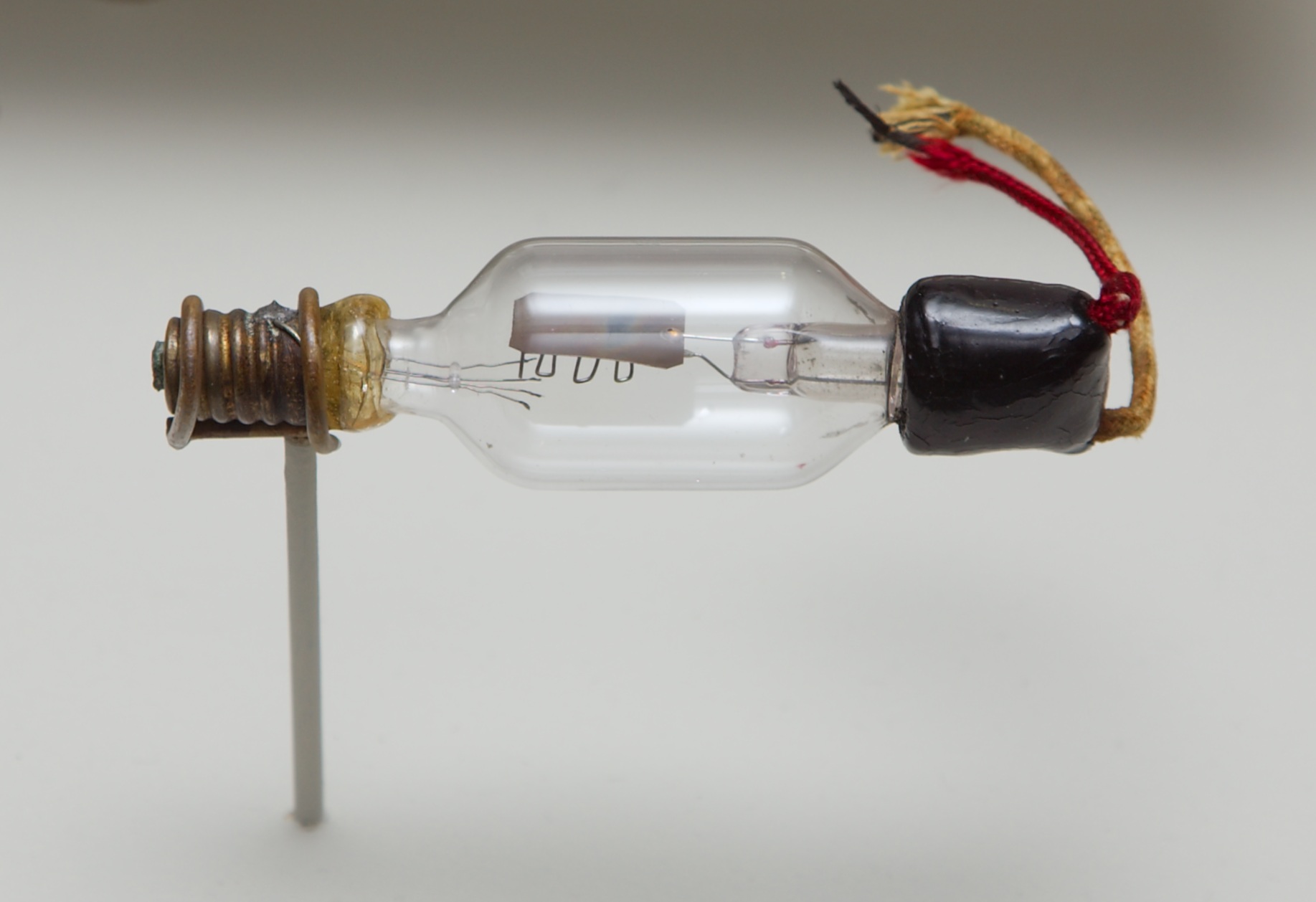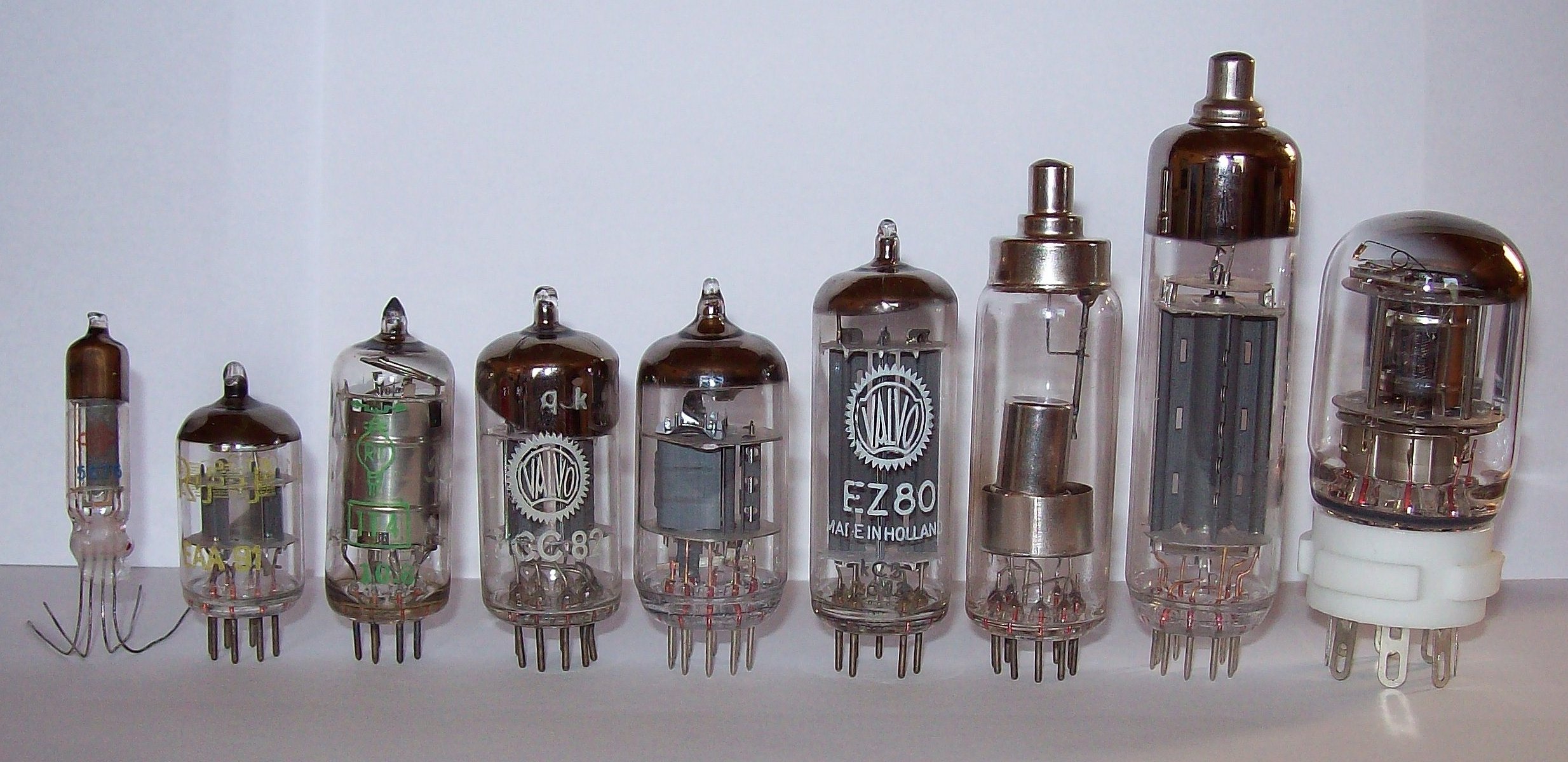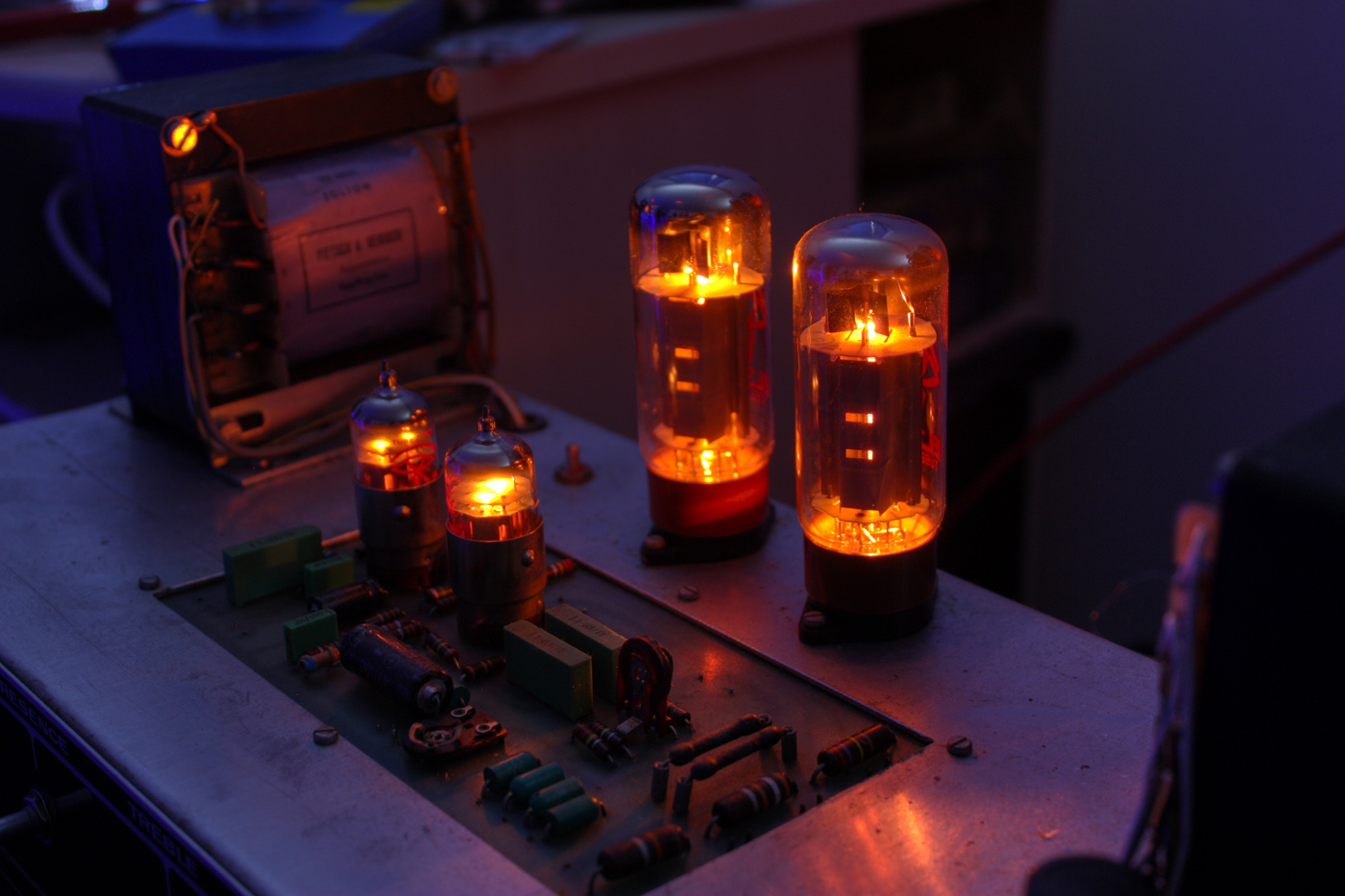|
Audion
The Audion was an electronic detecting or amplifying vacuum tube invented by American electrical engineer Lee de Forest in 1906.De Forest patented a number of variations of his detector tubes starting in 1906. The patent that most clearly covers the Audion is , Space Telegraphy', filed January 29, 1907, issued February 18, 1908 The link is to a reprint of the paper in the ''Scientific American Supplement'', Nos. 1665 and 1666, November 30, 1907 and December 7, 1907, p.348-350 and 354-356. It was the first triode, consisting of an evacuated glass tube containing three electrodes: a heated filament, a grid, and a plate. It is important in the history of technology because it was the first widely used electronic device which could amplify. A low power signal at the grid could control much more power in the plate circuit. Audions had more residual gas than later vacuum tubes; the residual gas limited the dynamic range and gave the Audion non-linear characteristics and erratic per ... [...More Info...] [...Related Items...] OR: [Wikipedia] [Google] [Baidu] |
Edwin Howard Armstrong
Edwin Howard Armstrong (December 18, 1890 – February 1, 1954) was an American electrical engineer and inventor, who developed FM (frequency modulation) radio and the superheterodyne receiver system. He held 42 patents and received numerous awards, including the first Medal of Honor awarded by the Institute of Radio Engineers (now IEEE), the French Legion of Honor, the 1941 Franklin Medal and the 1942 Edison Medal. He was inducted into the National Inventors Hall of Fame and included in the International Telecommunication Union's roster of great inventors. Armstrong attended Columbia University, and served as a professor there for most of his life. Early life Armstrong was born in the Chelsea district of New York City, the oldest of John and Emily (née Smith) Armstrong's three children. His father began working at a young age at the American branch of the Oxford University Press, which published bibles and standard classical works, eventually advancing to the positio ... [...More Info...] [...Related Items...] OR: [Wikipedia] [Google] [Baidu] |
Audion Receiver
An audion receiver makes use of a single vacuum tube or transistor to detect and amplify signals. It is so called because it originally used the audion tube as the active element. Unlike a crystal detector or Fleming valve detector, the audion provided amplification of the signal as well as detection. The audion was invented by Lee De Forest. In its operation, the circuit demodulates the radio frequency (RF) signal by rectification or square-law detection, and then amplifies this demodulated signal. The capacitor in series with the grid and parallel resistance forms a grid-leak detector which allow the grid to cathode to be used as a diode. In 1915 Edwin Armstrong developed an improved "regenerative" form of audion receiver that used the same vacuum tube for RF amplification, RF detection, and audio amplification.Derek K. Shaeffer, Thomas H. Lee, ''The design and implementation of low-power CMOS radio receivers'', Springer, 1999 {{ISBN, 0-7923-8518-7 page 6 See also * Tune ... [...More Info...] [...Related Items...] OR: [Wikipedia] [Google] [Baidu] |
Lee De Forest
Lee de Forest (August 26, 1873 – June 30, 1961) was an American inventor and a fundamentally important early pioneer in electronics. He invented the first electronic device for controlling current flow; the three-element " Audion" triode vacuum tube in 1906. This started the Electronic Age, and enabled the development of the electronic amplifier and oscillator. These made radio broadcasting and long distance telephone lines possible, and led to the development of talking motion pictures, among countless other applications. He had over 300 patents worldwide, but also a tumultuous career— he boasted that he made, then lost, four fortunes. He was also involved in several major patent lawsuits, spent a substantial part of his income on legal bills, and was even tried (and acquitted) for mail fraud. Despite this, he was recognised for his pioneering work with the 1922 IEEE Medal of Honor, the 1923 Franklin Institute Elliott Cresson Medal and the 1946 American Instit ... [...More Info...] [...Related Items...] OR: [Wikipedia] [Google] [Baidu] |
Triode Tube 1906
A triode is an electronic amplifying vacuum tube (or ''valve'' in British English) consisting of three electrodes inside an evacuated glass envelope: a heated filament or cathode, a grid, and a plate (anode). Developed from Lee De Forest's 1906 Audion, a partial vacuum tube that added a grid electrode to the thermionic diode ( Fleming valve), the triode was the first practical electronic amplifier and the ancestor of other types of vacuum tubes such as the tetrode and pentode. Its invention founded the electronics age, making possible amplified radio technology and long-distance telephony. Triodes were widely used in consumer electronics devices such as radios and televisions until the 1970s, when transistors replaced them. Today, their main remaining use is in high-power RF amplifiers in radio transmitters and industrial RF heating devices. In recent years there has been a resurgence in demand for low power triodes due to renewed interest in tube-type audio systems by ... [...More Info...] [...Related Items...] OR: [Wikipedia] [Google] [Baidu] |
Electronic Oscillator
An electronic oscillator is an electronic circuit that produces a periodic, oscillating electronic signal, often a sine wave or a square wave or a triangle wave. Oscillators convert direct current (DC) from a power supply to an alternating current (AC) signal. They are widely used in many electronic devices ranging from simplest clock generators to digital instruments (like calculators) and complex computers and peripherals etc. Common examples of signals generated by oscillators include signals broadcast by radio and television transmitters, clock signals that regulate computers and quartz clocks, and the sounds produced by electronic beepers and video games. Oscillators are often characterized by the frequency of their output signal: *A low-frequency oscillator (LFO) is an electronic oscillator that generates a frequency below approximately 20 Hz. This term is typically used in the field of audio synthesizers, to distinguish it from an audio frequency oscillator. *An ... [...More Info...] [...Related Items...] OR: [Wikipedia] [Google] [Baidu] |
Vacuum Tube
A vacuum tube, electron tube, valve (British usage), or tube (North America), is a device that controls electric current flow in a high vacuum between electrodes to which an electric voltage, potential difference has been applied. The type known as a thermionic tube or thermionic valve utilizes thermionic emission of electrons from a hot cathode for fundamental electronic functions such as signal amplifier, amplification and current rectifier, rectification. Non-thermionic types such as a vacuum phototube, however, achieve electron emission through the photoelectric effect, and are used for such purposes as the detection of light intensities. In both types, the electrons are accelerated from the cathode to the anode by the electric field in the tube. The simplest vacuum tube, the diode (i.e. Fleming valve), invented in 1904 by John Ambrose Fleming, contains only a heated electron-emitting cathode and an anode. Electrons can only flow in one direction through the device—fro ... [...More Info...] [...Related Items...] OR: [Wikipedia] [Google] [Baidu] |
Thermionic Valve
A vacuum tube, electron tube, valve (British usage), or tube (North America), is a device that controls electric current flow in a high vacuum between electrodes to which an electric potential difference has been applied. The type known as a thermionic tube or thermionic valve utilizes thermionic emission of electrons from a hot cathode for fundamental electronic functions such as signal amplification and current rectification. Non-thermionic types such as a vacuum phototube, however, achieve electron emission through the photoelectric effect, and are used for such purposes as the detection of light intensities. In both types, the electrons are accelerated from the cathode to the anode by the electric field in the tube. The simplest vacuum tube, the diode (i.e. Fleming valve), invented in 1904 by John Ambrose Fleming, contains only a heated electron-emitting cathode and an anode. Electrons can only flow in one direction through the device—from the cathode to the ... [...More Info...] [...Related Items...] OR: [Wikipedia] [Google] [Baidu] |
Amplifier
An amplifier, electronic amplifier or (informally) amp is an electronic device that can increase the magnitude of a signal (a time-varying voltage or current). It may increase the power significantly, or its main effect may be to boost the voltage or current ( power, voltage or current amplifier). It is a two-port electronic circuit that uses electric power from a power supply to increase the amplitude of a signal applied to its input terminals, producing a greater amplitude signal at its output. The ratio of output to input voltage, current, or power is termed gain (voltage, current, or power gain). An amplifier, by definition has gain greater than unity (if the gain is less than unity, the device is an attenuator). An amplifier can either be a separate piece of equipment or an electrical circuit contained within another device. Amplification is fundamental to modern electronics, and amplifiers are widely used in almost all electronic equipment. Amplifiers can be cat ... [...More Info...] [...Related Items...] OR: [Wikipedia] [Google] [Baidu] |
Long Distance Calling
In telecommunications, a long-distance call (U.S.) or trunk call (also known as a toll call in the U.K. ) is a telephone call made to a location outside a defined local calling area. Long-distance calls are typically charged a higher billing rate than local calls. The term is not necessarily synonymous with placing calls to another telephone area code. Long-distance calls are classified into two categories: national or domestic calls which connect two points within the same country, and international calls which connect two points in different countries. Within the United States there is a further division into long-distance calls within a single state (intrastate) and interstate calls, which are subject to different regulations (counter-intuitively, calls within states are usually more expensive than interstate calls). Not all interstate calls are long-distance calls. Since 1984 there has also been a distinction between intra-local access and transport area (LATA) calls and those ... [...More Info...] [...Related Items...] OR: [Wikipedia] [Google] [Baidu] |
Gridiron (cooking)
A gridiron is a metal grate with parallel bars typically used for grilling foods. Some designs involve two such grates hinged to fold together, securely holding food while grilling over an open flame. Development Early examples of the gridiron were found in Pompeii. The Latin term is "craticula", a diminutive form of "crates". This referred to their cross-hatched design, which appeared similar to a wicker basket, or crate. This is also used as the base for the word graticule, passing through French. There were numerous iron gridirons manufactured and patented in the U.S. in the 1800s. These iron legged devices were used in a fireplace placed over the fire to cook food. Over time, gridirons have been developed specifically to accommodate the type of food being prepared and the cooking method being used. A combination hinged gridiron and spider was developed and patented in 1836 by Amasa and George Sizer of Meriden, Connecticut. A steel wire gridiron was developed and patented ... [...More Info...] [...Related Items...] OR: [Wikipedia] [Google] [Baidu] |
John Harold Morecroft
John is a common English name and surname: * John (given name) * John (surname) John may also refer to: New Testament Works * Gospel of John, a title often shortened to John * First Epistle of John, often shortened to 1 John * Second Epistle of John, often shortened to 2 John * Third Epistle of John, often shortened to 3 John People * John the Baptist (died c. AD 30), regarded as a prophet and the forerunner of Jesus Christ * John the Apostle (lived c. AD 30), one of the twelve apostles of Jesus * John the Evangelist, assigned author of the Fourth Gospel, once identified with the Apostle * John of Patmos, also known as John the Divine or John the Revelator, the author of the Book of Revelation, once identified with the Apostle * John the Presbyter, a figure either identified with or distinguished from the Apostle, the Evangelist and John of Patmos Other people with the given name Religious figures * John, father of Andrew the Apostle and Saint Peter * Po ... [...More Info...] [...Related Items...] OR: [Wikipedia] [Google] [Baidu] |
